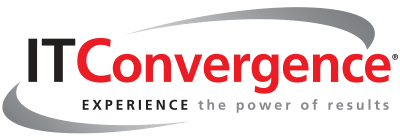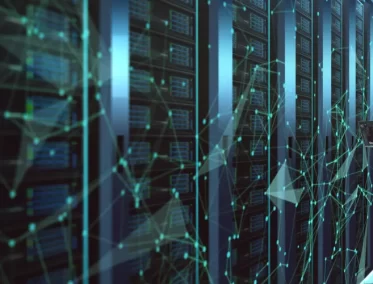When it comes to modernizing JD Edwards (JDE) applications, businesses often find themselves at a crossroads. Should they opt for a “lift and shift” approach to migrate existing workloads to the cloud, or should they upgrade to take advantage of modern capabilities and features? The answer depends on several factors, including business goals, IT infrastructure, and the specific benefits each approach offers. Below, we explore the key considerations for both strategies to help you make an informed decision.
Understanding the JDE Lift-and-Shift Approach
The lift-and-shift strategy involves migrating your current JD Edwards workloads to a cloud environment with minimal changes to the existing setup. This approach is often seen as a quick and cost-effective way to move to the cloud, making it an attractive option for businesses looking to modernize without significant upfront investment.
Advantages of Lift and Shift in JD Edwards
- Faster Time-to-Cloud: By keeping the existing configurations and processes intact, businesses can expedite their cloud migration journey, reducing downtime and accelerating deployment.
- Lower Initial Costs: Lift and shift requires fewer resources and less extensive planning compared to a full upgrade, making it more affordable for organizations with budget constraints.
- Minimal Disruption: Since the underlying application architecture remains unchanged, this method minimizes disruptions to daily operations, allowing teams to continue working with familiar systems.
- Scalability and Flexibility: Moving to the cloud allows businesses to scale resources on demand, even without immediate upgrades to their applications, making it easier to adapt to changing business needs.
- Cloud-Based Disaster Recovery: By hosting workloads in a cloud environment, businesses can enhance disaster recovery capabilities, ensuring that critical data is protected and easily recoverable in case of an outage.
Drawbacks of Lift and Shift in JD Edwards
- Limited Optimization: While migration is quicker, legacy systems remain unchanged, potentially missing out on the full benefits of cloud-native capabilities such as automation and advanced analytics.
- Technical Debt: Retaining older configurations can create ongoing maintenance challenges and limit future innovation, requiring businesses to eventually invest in upgrades.
- Underutilization of Cloud Features: Without redesigning or upgrading, businesses may not fully leverage advanced cloud functionalities like machine learning, predictive analytics, and AI-driven automation.
- Potential Performance Bottlenecks: Legacy applications may not be fully optimized for cloud environments, which can lead to inefficiencies and increased operational costs over time.
The Case for Upgrading JD Edwards
Upgrading JD Edwards involves adopting the latest versions and capabilities, either before or during cloud migration. This approach requires more planning and resources but offers long-term benefits, helping businesses future-proof their IT infrastructure.
Advantages of Upgrading
- Enhanced Features and Functionality: The latest versions of JD Edwards include new tools, improved user interfaces, and enhanced analytics capabilities, providing a more intuitive user experience.
- Cloud-Native Optimization: By upgrading, businesses can design applications to take full advantage of the cloud’s capabilities, such as elasticity, automation, and advanced integrations with third-party tools.
- Future-Proofing: Modernized systems are better equipped to adapt to emerging technologies, ensuring long-term ROI and reducing the risk of obsolescence.
- Improved Security: Upgrades often include critical patches and security enhancements, reducing vulnerability risks and ensuring compliance with industry regulations.
- Better Performance and Efficiency: Upgrading helps optimize system performance, improving processing speeds, reducing latency, and enhancing overall operational efficiency.
- Advanced AI and Machine Learning Capabilities: By upgrading, businesses can integrate AI-driven automation, predictive maintenance, and real-time insights, leading to smarter decision-making.
Drawbacks of Upgrading
- Higher Initial Costs: Upgrading requires a significant investment in time, resources, and expertise, making it a more costly endeavor compared to lift and shift.
- Longer Timelines: The process of upgrading and migrating simultaneously can extend project timelines, requiring careful planning to avoid disruptions.
- Organizational Adjustment: Employees and stakeholders may require training to adapt to new systems and workflows, necessitating change management efforts.
- Complex Implementation: Upgrading JD Edwards can involve reconfiguring business processes and integrating new technologies, which can introduce additional complexity.
Lift and Shift vs JDE Upgrade: Key Factors to Consider
When deciding between lift and shift and upgrading, consider the following factors:
1. Business Objectives
- If your goal is to quickly move to the cloud with minimal disruption, lift and shift may be the right choice.
- For businesses focused on long-term efficiency, innovation, and scalability, an upgrade offers greater value.
2. Budget Constraints
- Lift and shift often comes with lower upfront costs, making it appealing for organizations with tight budgets.
- Upgrading requires a larger initial investment but delivers more significant savings and efficiencies over time, reducing technical debt.
3. Technical Debt
- Evaluate the extent of your existing technical debt. If legacy systems are causing frequent maintenance challenges and performance bottlenecks, upgrading may be the better option.
4. Long-Term Goals
- Organizations aiming for digital transformation and future-ready infrastructure should prioritize upgrading.
- Those looking for short-term cloud adoption benefits can consider lift and shift, with plans to upgrade in phases.
The Role of Cloud Migration Services
Whether you choose lift and shift or an upgrade, cloud migration services play a crucial role in ensuring a seamless transition. These services provide:
- Strategic Planning: Identifying the best migration strategy for your JD Edwards environment.
- Technical Expertise: Managing complex migration tasks while minimizing risks.
- Cost Optimization: Ensuring that resources are allocated efficiently during and after migration.
- Ongoing Support: Offering continuous monitoring, performance tuning, and optimization to maximize cloud benefits.
- Compliance and Security: Ensuring that cloud environments meet regulatory standards and provide robust data protection measures.
Hybrid Approaches: Combining Lift and Shift with Upgrades
In some cases, a hybrid approach may be the best solution. Businesses can start with a lift-and-shift migration to move workloads to the cloud quickly, followed by incremental upgrades to modernize systems over time. This phased approach balances the need for speed with the benefits of long-term optimization, reducing upfront complexity while gradually unlocking cloud-native benefits.
Final Thoughts
Choosing between lift and shift and upgrading JD Edwards depends on your organization’s unique needs and goals. While lift and shift offers a faster route to the cloud with minimal disruption, upgrading provides a pathway to unlock the full potential of modern cloud capabilities and future-proof your business operations.
To ensure a successful transition, consider partnering with cloud migration experts who can guide you through the process, helping you weigh the pros and cons of each approach. With the right strategy in place, your JD Edwards applications can become a cornerstone of your organization’s digital transformation journey, enhancing efficiency, security, and innovation.




